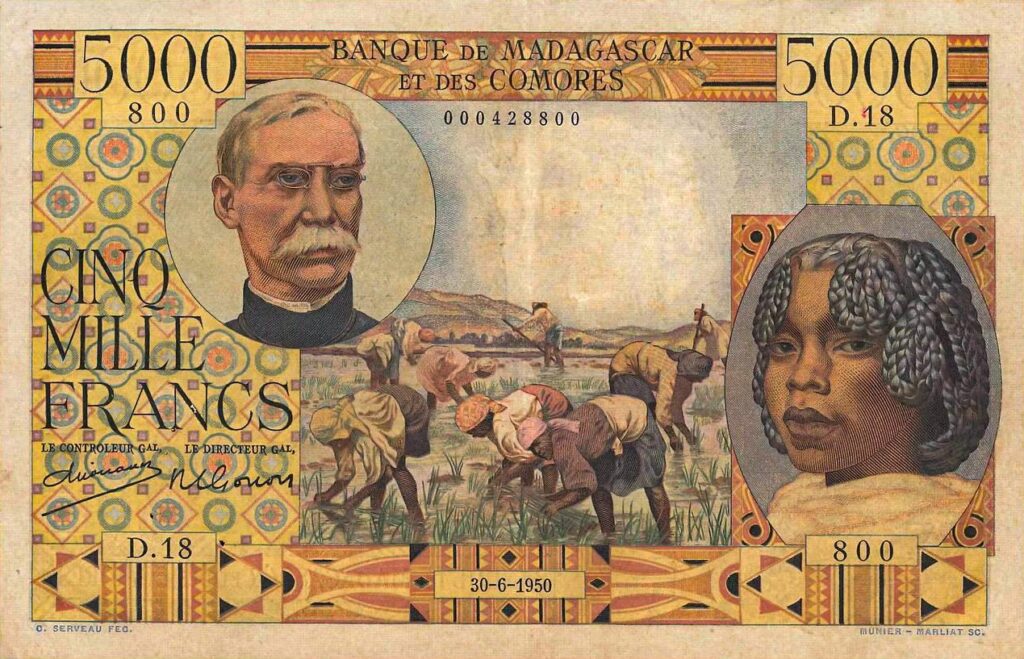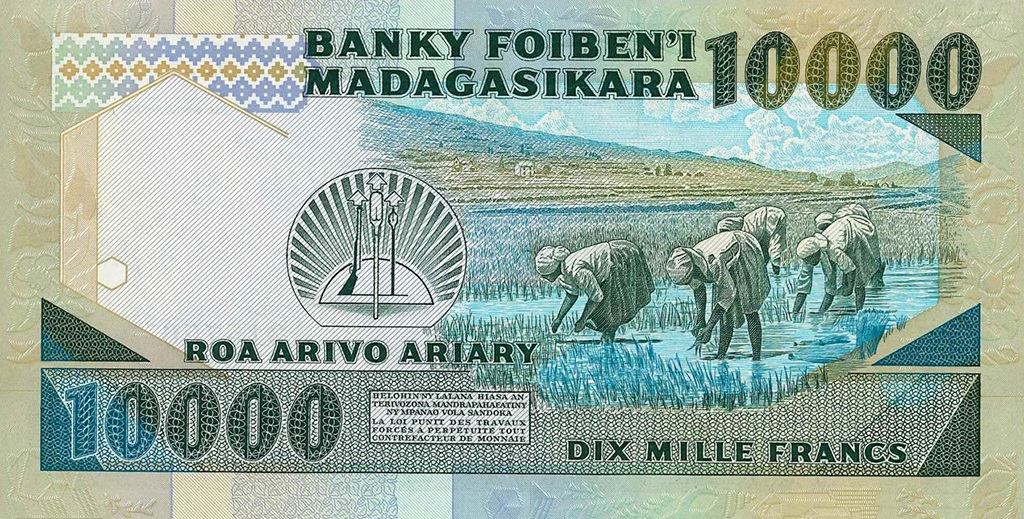
The advent of Malagasy Ariary


Madagascar is an exception in many aspects; cut-off from the rest of world this fourth largest island has remained out of human bounds for centuries. Human history in Madagascar is relatively recent but it speaks loud about its first human inhabitants who reached this untouched paradise on out-trigger canoes from the Malay Archipelago sometime between 350-550 CE. These indefatigable sailors were later joined by tribal populace from the neighboring continental Africa. Known as Madagasikara to the Malagasy people, the main land accommodated 18 main ethnic groups. They were brought under a kingdom sometime in the early 19th Century by Merina nobles only to be taken over by the French in 1897 CE. Madagascar gained its independence in 1960 but it never became free; heavily dependent on their colonial masters in nearly every walk of Malagasy live. Madgascar’s motto of “Fitiavana, Tanindrazana, Fandrosoana” that translates into “Love, Fatherland, Progress” still remains a distant dream.


The first banknotes circulated in the island nation were the Francs issued by the colonial administrators. A local currency named Ariary was adopted after independence in 1961 and banknotes over-printed by Institut d’Émission Malgache (Malagasy Issuing Institute) on old editions designed by Bank of Madagascar and Comoros. Despite its immediate adoption after independence, the progression of Ariary as an official currency has been sluggish. Despite being a non-descript currency, Malagasy Ariary (MGA) has something unique. It is one of the only two currencies in the whole world that is non-decimal; One Ariary is divided into 5 Iraimbilanja. In value, the erstwhile Francs have been placed equal with Iraimbilanja (1 Ariary = 5 Iraimbilanja = 5 Francs). Even after independence, banknotes were issued with dual currencies, but Francs highlighted more prominently. Gradually, the Ariary grew in stature and enjoyed increased prominence; expanding in size in issues of 1993 and finally pushing the “Franc” out of the banknote in 2003. In 2017, the Central bank of Banky Foiben’i Madagasikara came out with a brand new set of banknotes showcasing “Madagascar and its Riches.”






Main Features | The old Franc banknotes have been pretty straight forwards with clearly defined spaces and positioning of its graphic elements. On the front, we find (i) Numerals for denominations in two sizes and Serial Number in single size at two diagonally opposite corners (ii) Texts for Denomination in words (only for Ariary), Issuing Authority – Banky Foiben’i Madagasikara (iii) Images – One dominating portrait (Common People) and Two or more sceneries, landscapes derived from Malagasy culture. The back is more artistic with (i) Numerals for denomination (Francs) in two sizes at top corners (ii) texts include Banky Foiben’i Madagasikara and denomination in Ariary (iii) Single Signatory – Le Gouverneur and a warning in local Malagasy at Left bottom – Helohin’ny Lalana Hiasa Anterivozona Mandrapahafatiny Ny Mpanao Vola Sandoka, La Loi Punit De Travaux Forces a Perpetuite Tout Contrefacteur De Monnaie – meaning “Counterfeit money makers are condemned by the Law to work for Life, The forced Labor law perpetuates all money counters.” The new Ariary banknotes have retained much of this simplicity and vibrant colors but improved significantly in areas such as (i) enhanced safety features like holographic labels, infusion of textual elements into graphics (ii) universality – friendly for blind (iii) focus on Madagascar’s unique wildlife. In their present form, the harmonious and aesthetically appealing banknotes represent the desire of a nation to develop and surge ahead.











